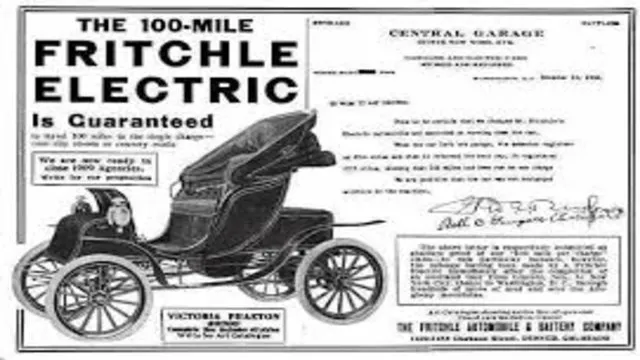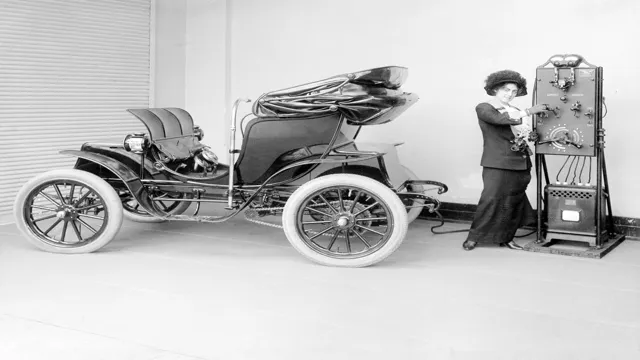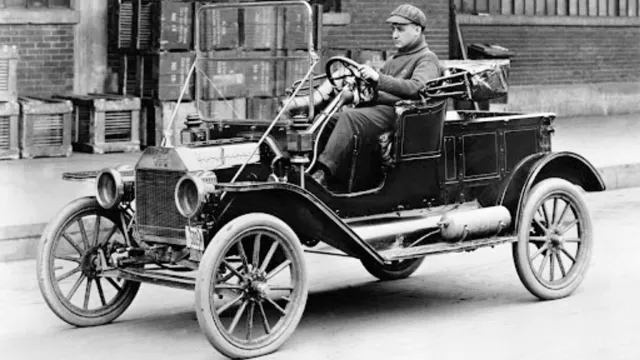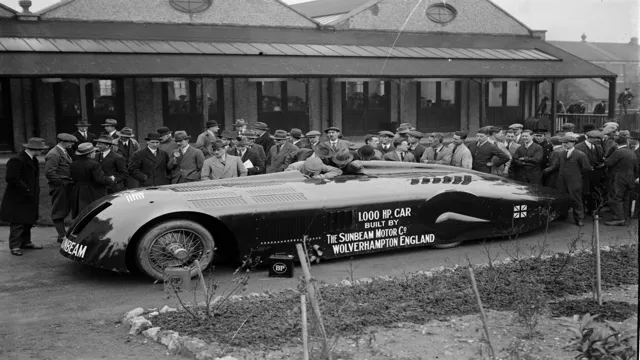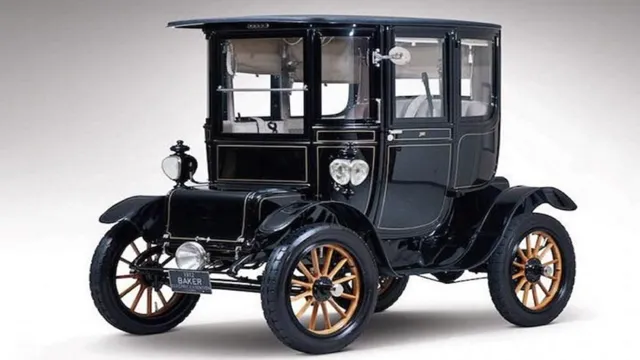Revolutionizing the Roads: Tracing the Fascinating History of the Electric Car Starter
Have you ever wondered how cars were started before the invention of the electric starter? It’s hard to imagine a time when starting a car required physical prowess and patience. The electric car starter made it easy for drivers to start their vehicles, transforming the way we approach starting cars forever. But have you ever wondered about the history of the electric car starter? When was it invented? Who was responsible for this groundbreaking invention? In this blog post, we’ll dive deep into the history of the electric car starter and explore how it has evolved over the years.
From crank handles to the modern-day push-button start, we’ll explore the different iterations of this essential car component. Join us on a journey through time and discover the fascinating innovations and inventors responsible for revolutionizing the way we start cars. From the earliest concepts to the modern electric cars, the evolution of the electric start has been a long and fascinating journey that has changed the world of cars forever.
So buckle up and get ready for a ride through history!
Early Attempts
The history of the electric car starter dates back to the early 1900s when automobile manufacturers were looking for ways to make starting a car more convenient. One of the first attempts was the “electric button” which was essentially a rudimentary switch that required a driver to push it to engage the starter motor. This system was fraught with problems, as it required a significant amount of current to operate and was prone to short-circuiting.
Another attempted system used batteries that were located under the hood, but it also had its share of issues such as weight and the need to recharge the batteries frequently. These early attempts may have been less than perfect, but they set the foundation for the electric starter system that we use today, which is a reliable and essential feature of modern vehicles.
First Electric Starter Invented by Charles Kettering in 1911
The first electric starter was invented by Charles Kettering in 1911, revolutionizing the way we start cars. However, before Kettering’s invention, there were different attempts to eliminate the crank handle that drivers used to start their vehicles. For instance, in the early 1900s, motorists could buy an aftermarket accessory called a “Self-Starter,” but it was expensive and unreliable.
The Self-Starter had heavy batteries that drivers had to charge, and it didn’t always work correctly. Additionally, some automakers attempted to provide alternatives to the crank handle, such as the Handley-Knight, patented in 1906, and the Delco-Light, which made low-powered electric lighting systems for homes but proved unreliable for vehicle starters. As the automobile industry expanded, the need for a more reliable and efficient self-starter became increasingly apparent.
Kettering’s invention of the electric starter was the answer to this problem and made driving accessible to a wider range of people who would have otherwise been unable to physically start their cars manually.
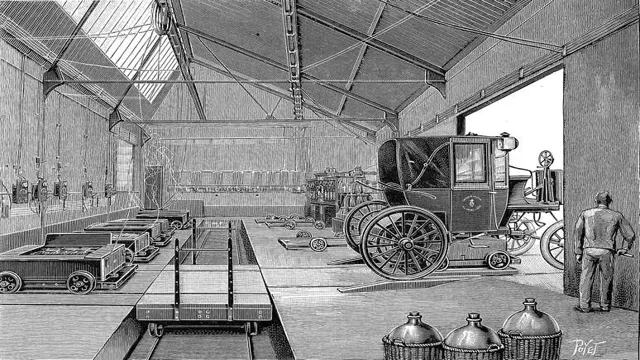
Use of Electric Starters in Luxury Cars in the 1920s
In the 1920s, it was considered a luxury feature to have an electric starter in cars. However, early attempts at incorporating them often proved to be unreliable. Many luxury car manufacturers in this era tried to install electric starters, but they were often met with difficulties.
These attempts were not always successful, leading to the electric starter being seen as an unnecessary investment by some manufacturers. However, as the demand for more comfortable and user-friendly luxury cars grew, so did the need for electric starters. Manufacturers soon overcame these difficulties, and electric starters became a common feature in luxury cars by the end of the 1920s.
This clearly shows how technological advancements are made and how luxury car manufacturers adapt to suit the changing needs of their customers.
Evolution of the Electric Starter
The history of the electric car starter is an interesting one. Before electric starters, drivers had to physically crank the engine to start the vehicle. However, this was a dangerous task as the crank could suddenly kick back and injure the driver.
As a result, the electric starter was invented in 1911 by Charles Kettering and Henry Leland. This invention revolutionized the way cars were started and made it much safer for drivers. The electric starter worked by using a small electric motor to turn the engine over, which allowed the car to start without the need for a manual crank.
This innovation made car ownership more accessible to the general public and kickstarted the automobile industry as we know it today. The electric starter paved the way for other automotive advancements, such as hybrid and electric cars, and continues to be an important part of modern automobiles.
Improvements Made to Electric Starters in the 1930s and 1940s
The electric starter has come a long way since its inception in the early 1900s. The 1930s and 1940s saw significant improvements made to this device, which made it more efficient and reliable than ever before. One of the key innovations during this period was the development of the Bendix drive, which allowed the starter motor to engage with the engine’s flywheel more easily.
Another significant improvement was the use of solenoids, which replaced the earlier mechanical switches and made the starter more responsive. These advances made electric starters more economical and easier to use, which ultimately led to their widespread adoption in the automotive industry. Today, the electric starter remains a vital component of every modern vehicle, providing a reliable and convenient way to get our engines up and running.
Introduction of the Bendix Drive in the 1940s
The evolution of the electric starter in the automotive industry has been an interesting one. In the 1940s, the introduction of the Bendix Drive brought a significant improvement to the electric starter. This new gear system allowed the starter to engage and disengage the engine’s flywheel quickly, eliminating the need for manual engagement.
Before the Bendix Drive’s introduction, drivers had to manually crank their engines, which was not only physically demanding but also dangerous. The Bendix Drive helped improve the safety and efficiency of cars and was quickly adopted by automakers around the world. This innovation paved the way for further improvements in electric starters, including the development of the solenoid switch in the 1950s, which allowed for even quicker engagement of the starter.
Today, modern electric starters are reliable, efficient, and easy to use, making them an essential component of every car. The evolution of the electric starter has been vital to the development of the automotive industry, and it continues to push the boundaries of innovation and technology.
Further Advancements in the 1950s and 1960s
The evolution of the electric starter in the 1950s and 1960s marked a significant advancement in the automotive industry. The electric starter allowed for a quick and easy start of the car engine without the need for the tiring and strenuous hand-cranking of the engine. This meant that the automotive industry could produce vehicles that were easier and more comfortable for people to operate, leading to an increase in car sales and an expansion of the auto market.
The electric starter is a prime example of how advancements in technology can improve our daily lives and bring about widespread change. As time went on, other evolutions in car technology, such as power steering and air conditioning, became standard features. It is fascinating to think about how far we have come since the early days of the automobile and how the electric starter helped pave the way for future advancements.
Modern Electric Starters
The history of the electric car starter is quite fascinating, as it has revolutionized the way we start our cars today. Before the invention of the electric starter, cars were started using a hand crank, which required a significant amount of effort and could be quite dangerous if not done correctly. However, in 1912, Charles Kettering invented the electric starter, which allowed drivers to start their cars with the push of a button.
This invention not only made starting a car easier and safer but also made it possible for more people to own and drive cars, leading to the popularity of automobiles worldwide. Today, modern electric starters have become even more advanced and efficient, allowing instant starting with little effort. It’s amazing to think that this simple yet essential device has been around for over a century and has made such a significant impact on our daily lives.
Introduction of Start-Stop Technology in the 2000s
When it comes to modern electric starters, the introduction of Start-Stop Technology in the 2000s has been a game changer. This technology is designed to automatically switch off the engine of a vehicle when it comes to a stop, such as at a red light or in heavy traffic, and then restart it when the driver steps on the gas pedal again. Not only does this reduce fuel consumption and emissions, but it also offers a smoother and more efficient driving experience.
This is because modern electric starters have improved immensely over the years. They are now able to react almost instantly, making starting and stopping the engine seamless. Additionally, they are much quieter and more reliable than their earlier counterparts.
With the increasing demand for environmentally friendly vehicles, modern electric starters are likely to become even more prevalent, making driving more efficient and economical than ever before.
Advancements in Electric Starter Technology in the Present Day
Electric starter technology has come a long way since its inception decades ago. Modern electric starters are more efficient, reliable and compact than those of yesteryears. The advancements in engineering and materials science have revolutionized the design and production of electric starters.
One of the latest advancements in electric starter technology is the use of rare-earth magnets. These high-energy magnets are much stronger than traditional magnets, generating greater torque and operating at lower speeds and temperatures. Additionally, modern electric starters are equipped with sophisticated electronics that have improved the safety and performance of these systems.
Electronic controls prevent overloads and voltage drops, ensuring a consistent and reliable start every time. Modern electric starters are also much more compact and lighter, enabling them to be integrated into a wide range of applications, from vehicles to industrial machinery. They are also less likely to fail, reducing maintenance and repair costs and ensuring maximum uptime for the user.
Overall, the advancements in electric starter technology have made these systems more efficient, reliable, and user-friendly, benefitting both the users and the environment.
Future of the Electric Car Starter
The history of the electric car starter dates back to the early 1900s. At the time, most cars still had hand-cranked starters which could be difficult and dangerous to use. In 1911, Cadillac introduced the first electric car starter, revolutionizing the automobile industry.
However, with the increasing popularity of electric cars, many are questioning the future of the electric car starter. As technology continues to advance, new methods for starting electric cars are being developed, such as smartphone apps and push-button starts. While the electric car starter may eventually become obsolete, it will always remain an important part of automotive history.
As more people choose electric cars for their environmental and economic benefits, it will be interesting to see how the evolution of electric car technology continues.
Conclusion
And there you have it, the electrifying history of the electric car starter. From the days of hand-cranking to the modern push-button ignition, the electric car starter has paved the way for effortless and convenient driving. With its power to revolutionize the driving experience, it’s no wonder that the electric car starter has become an indispensable feature in every car today.
So next time you turn the key or press that button to start your car, take a moment to appreciate the ingenuity and innovation that has brought us to this electrifying moment in automotive history.”
FAQs
What is the electric car starter?
The electric car starter is a device that allows the internal combustion engine to start by cranking it with an electric motor.
Who invented the electric car starter?
The electric car starter was invented by Charles Kettering in 1911, who was an American inventor and engineer.
How did the electric car starter impact the automotive industry?
The electric car starter made it easy for people to own and drive automobiles, as it eliminated the need for hand-cranking the engine to start the car. This made driving much more convenient and safer.
Is the electric car starter still in use today?
Yes, the electric car starter is still used in all modern automobiles. It has evolved over time and is now more efficient and reliable than ever before.
